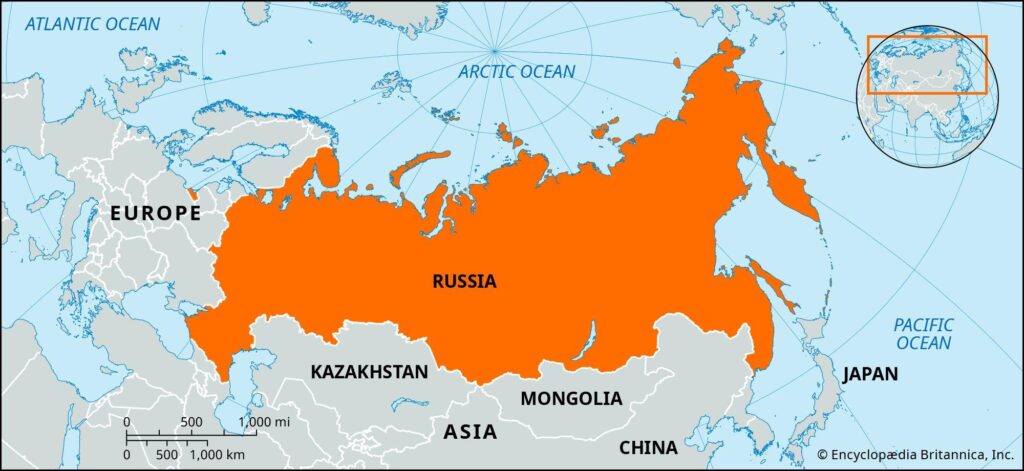Russia has reportedly seized control of approximately $50 billion in assets amid ongoing economic shifts triggered by the war in Ukraine, according to recent research cited by Reuters. This significant financial move highlights Moscow’s response to increasing international sanctions and the evolving landscape of its domestic economy as the conflict continues. The developments offer critical insight into how Russia is reallocating resources to sustain its economic agenda during a period of unprecedented geopolitical strain.
Russia Seizes Billions in Assets Amid Economic Realignment During Ukraine Conflict
In a strategic move amidst continuing hostilities, Russia has reportedly taken control of assets valued at approximately $50 billion. The seizure marks a significant recalibration of the country’s economic stance during the ongoing conflict in Ukraine, targeting both domestic resources and foreign holdings. Analysts suggest that this aggressive accumulation aims to buffer the Russian economy from international sanctions and supply chain disruptions currently crippling various sectors. Key industries impacted include energy, finance, and manufacturing, which are now being redirected to support internal stability and military expenditures.
Experts highlight that this economic realignment is accompanied by a broader shift in trade alliances and financial policies, underlining a move towards increased self-sufficiency. Below is an overview of the sectors affected and the estimated value of assets seized:
| Sector | Estimated Asset Value (Billion $) |
|---|---|
| Energy | 18 |
| Finance | 14 |
| Manufacturing | 10 |
| Technology | 8 |
- Energy sector: Continued emphasis on domestic oil and gas reserves
- Financial assets: Restructuring under state control to avoid international freeze-outs
- Manufacturing: Shift to military-grade production and essential goods
Impact on Global Markets and Sanctions Efficacy Explored by Experts
Global market dynamics have felt significant tremors following the seizure of assets estimated at $50 billion amid the conflict in Ukraine. Financial analysts highlight that these moves not only reshape capital flows but also test the robustness of international sanctions. The disruption affects currency stability, investment patterns, and corporate risk assessments, driving volatility in key sectors such as energy, commodities, and banking. Experts underscore how interconnected these repercussions are with global supply chains and geopolitical alignments, suggesting a ripple effect beyond the immediate actors involved.
Key factors influencing sanctions efficacy:
- Adaptability of sanctioned entities in circumventing restrictions
- Coordination levels among sanction-imposing nations
- Impact on third-party economies tied to Russia’s trade
- Legal and financial enforcement mechanisms
| Market Indicator | Pre-Seizure Impact | Post-Seizure Shift |
|---|---|---|
| Energy Prices | Stable | Increased volatility |
| Capital Outflow | Moderate | Sharp rise |
| Currency Exchange Rates | Steady | Fluctuating |
Strategic Recommendations for Policymakers to Counter Economic Shifts
To effectively mitigate the ripple effects of the massive asset seizure and broader economic transformations triggered by the ongoing conflict, policymakers must adopt multidimensional strategies focused on resilience and adaptability. Prioritizing economic diversification emerges as a critical lever, reducing excessive dependence on vulnerable sectors and fortifying national stability. Strengthened international collaborations, including enhanced intelligence-sharing and coordinated sanctions enforcement, are essential to close loopholes exploited by illicit capital flows.
Efficient fiscal management combined with timely social safety nets can shield vulnerable populations from sudden economic shocks. Key approaches include:
- Enhancing financial transparency to detect and prevent concealed asset movements;
- Supporting innovation-driven growth to foster long-term economic independence;
- Investing in cybersecurity frameworks to protect critical financial infrastructure;
- Regularly updating risk assessments tied to geopolitical developments.
| Policy Area | Action | Expected Outcome |
|---|---|---|
| Sanctions Enforcement | Real-time data sharing among allies | Faster asset identification & seizure |
| Economic Diversification | Investment in emerging industries | Reduced economic vulnerability |
| Social Safety Nets | Expanded unemployment benefits | Mitigated social unrest risks |
Final Thoughts
As Russia continues to navigate the economic ramifications of the ongoing conflict in Ukraine, the seizure of $50 billion in assets marks a significant shift in the nation’s financial landscape. This move underscores the broader economic strategies at play amid escalating international sanctions and geopolitical tensions. Analysts will be closely monitoring how these developments influence Russia’s economy and its position on the global stage in the coming months.
